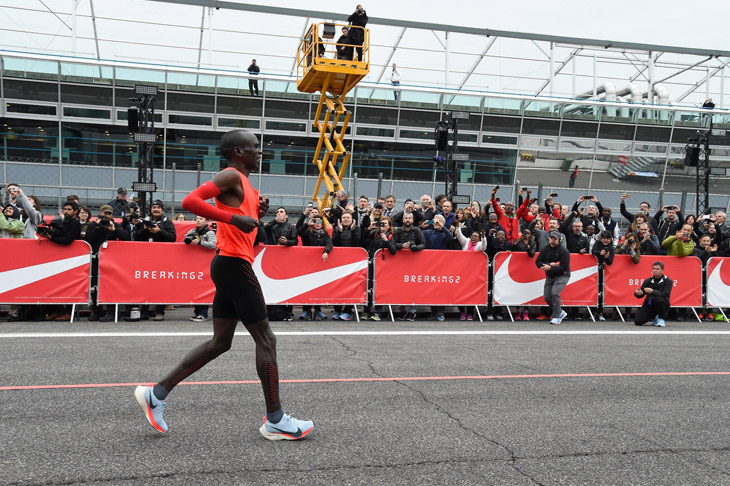Of the great sporting imponderables that have come into clearer view over the past few days — will The Archers’ Lily Pargetter ever score any runs for Ambridge and herald a bold new world for women’s cricket? Will we see the first sub-two-hour marathon? — only one can be answered with clarity. As for hapless Lily, heaven knows, but unquestionably we will soon find the holy grail of distance running. By soon, I mean I hope it will happen in my lifetime, and I am knocking on a bit.
It came tantalisingly close last weekend in an extraordinary project bringing together the millions and the marketing whizz of Nike with the endurance genius of African distance runners. Before sunrise on the flat, gentle course of the Monza motor racing circuit in Italy, three elite runners set off with the aim of breaking two hours. They were shepherded by a squad of equally elite pacemakers who came in and out, running in an arrowhead formation to protect the runners from wind resistance. Just ahead was a Tesla electric car with a giant timer showing the athletes what they had to do. The runners were fuelled by a new sports drink brought to them on mopeds so they didn’t have to slow down. Nike was also trying out a new shoe, the Zoom Vaporfly. There was a lot riding on this race: it wasn’t just any old run.
In the end the great Kenyan Eliud Kipchoge finished in two hours, 25 seconds, more than two-and-a-half minutes inside Dennis Kimetto’s 2014 world record. The time will not count as a record because of the rotating pacemakers and all the other factors. But Kipchoge is said to have been paid a million dollars to skip the Berlin and London marathons for this project, and he certainly earned his corn. Whatever you think of the manufactured nature of the event, this was an epic piece of distance running by the best marathon runner in the world. He has won seven of the past eight he has raced and in Monza was on course to break two hours until the 19th mile. He might not be the one to break two hours, but others can come behind him. And they will. We can only look on in wonder at these supermen.
Time to salute Chelsea’s Antonio Conte who is about to waltz into the Premier League title, an outcome predicted here last September. Who can’t like such a manager: he wears his heart on his sleeve and answers all questions civilly. He’s also produced a team of exceptional players, delivering often glorious football in contrast to the dourness that was the hallmark of his predecessor, José Mourinho.
But (there’s always a but), is it too much to ask that Chelsea occasionally find room for British players? I reckon only Gary Cahill has held a regular first team place. Ruben Loftus–Cheek, the powerfully named Lewisham-born midfielder, seems to be another waiting in the wings, and my, how he’s waited. He first signed for Chelsea at the age of eight and is now 21. Surely Conte can do a bit better in bringing on homegrown talent.
It’s such a contrast with Chelsea of old and its quintessentially English players: Jimmy Greaves, ‘Chopper’ Harris, John Hollins. I remember Hollins telling me his annual budget for the whole club when he was manager. It would just about have covered the weekly wage for Costa and Fabregas. Different times of course, and I don’t want to sound too much like the CO of Her Majesty’s Loyal Regiment of Brexiteers, but sooner or later, if England are to have any hope of progressing in a World Cup, the big clubs will have to start nurturing homegrown stars.
And a last word for traditional English values: when Chopper Harris was booked for an outrageously late tackle on Stanley Matthews, he excused himself by saying: ‘Sorry ref, I got there as soon as I could.’







Comments